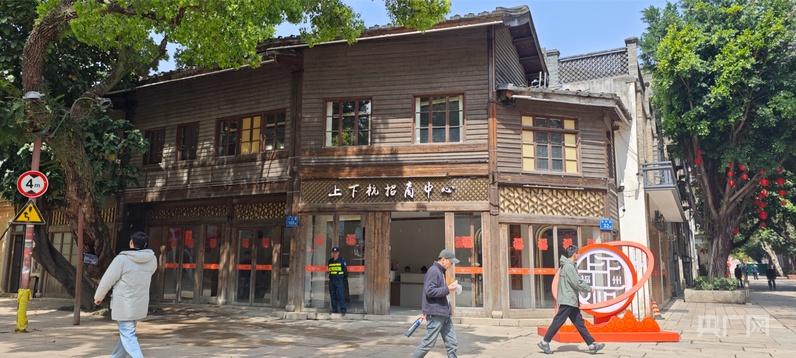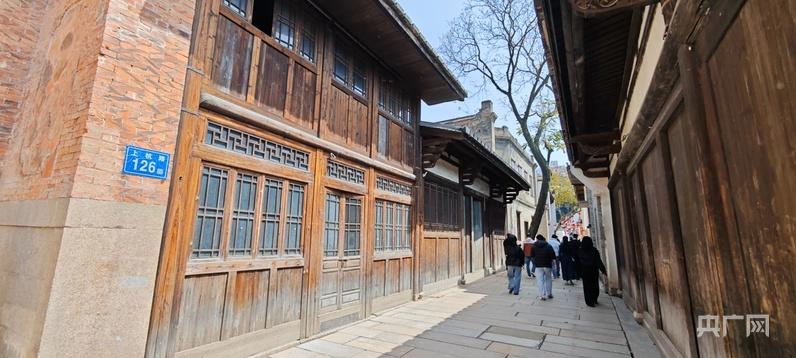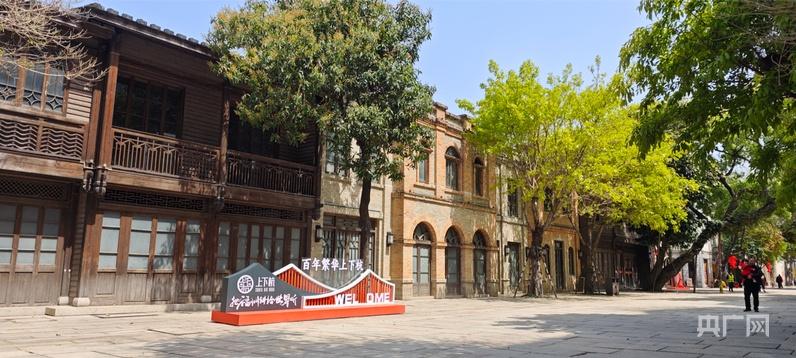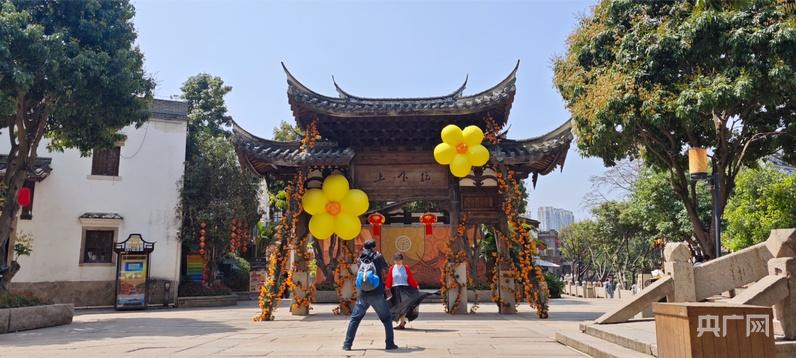Fuzhou Issues “Identity Certificates” for Ancient Buildings Promoting Historical Districts from Preservation to Revival
Ancient buildings are the very “roots” and “soul” of a city. In Fuzhou, ancient buildings form a vital part of the city’s cultural and historical heritage, carrying the memories of Fuzhou natives. However, since most of these buildings are timber-and-earth structures, they often face challenges in meeting modern building codes and securing the required approvals and inspections.
Ancient buildings without official documentation can’t be legally bought, sold, or integrated into modern life. Finding a way to provide these ancient buildings with a kind of “identity certificate” to promote their revitalization and practical use has become a significant challenge for several local agencies, including the Fuzhou Municipal Bureau of Natural Resources and Planning and the Fuzhou Real Estate Registration and Transaction Center.
Challenge: Formulating Tailored Regulations for Ancient Buildings
Preserving ancient buildings is a shared consensus in Fuzhou, but beyond preservation, the real challenge lies in how to revitalize them. This has become a major concern for several government departments in recent years.
“For example, many of Fuzhou’s ancient buildings are timber, timber-and-earth, or brick-and-timber structures, featuring unique structural elements like rammed earth walls and row-lock walls. The existing approval and inspection systems for construction projects have no enforceable standards for these traditional buildings,” said the head of the Property Division at the Fuzhou Real Estate Registration and Transaction Center. “These issues directly affect the issuance of property ownership certificates for these ancient buildings.”
In recent years, the Fuzhou Municipal Bureau of Natural Resources and Planning, together with the Fuzhou Historical and Cultural City Management Committee, has completed the Fuzhou Historical and Cultural City Protection Plan (2021–2035). They have also developed protection and detailed regulatory plans for dozens of important historical districts, including Sanfang Qixiang and Shangxiahang.

In the Shangxiahang Historical and Cultural District of Fuzhou, some historical buildings have already been issued an “identity certificate.” (Photo by CNR Reporter Zhang Zijian)
“To retain the original architectural form and style of the ancient buildings as much as possible, while allowing them to be officially certified, put on the market, and meet safety and structural standards,” said the head of the Property Division, “we need to make certain flexible adjustments and breakthroughs within the current system.”
This means that a series of tailored, innovative measures must be developed specifically for the ancient buildings.
In 2024, Fuzhou city leaders led a delegation to Suzhou’s Pingjiang Historical and Cultural District to learn from its best practices in the revitalization and preservation of historical buildings. They also engaged various functional departments in repeated on-site inspections, organized regular workshops for collaborative discussions, and established a dedicated task force to closely monitor and follow up on progress in real time.
Joint Effort: Multi-Department Collaboration to Remove Barriers and Speed Up Certification
To this end, Fuzhou twice revised and refined its regulations for calculating the floor area of ancient buildings, incorporating them into the Technical Guidelines for Calculating Building Floor Area in Fuzhou. The city also issued the province’s first set of guidelines for certifying ancient buildings—the Guidelines for Processing Property Ownership Certificates for Ancient Buildings in Fuzhou (Trial)—which clearly outlines the full approval process for planning, construction, acceptance, and property registration. In addition, it took into full account the differences between ancient and new buildings and accordingly updated the Construction Planning Permit Guidelines (for Ancient Buildings). Also, the city developed a series of documents, including the Ancient Building Fire Protection Design Guidelines and Fire Safety Review Guidelines, establishing a coordinated review and oversight mechanism for fire safety. These guidelines set out appropriate and restricted uses for fire protection facilities in historical and traditional-style buildings.

In the Shangxiahang Historical and Cultural District of Fuzhou, some historical buildings have already been issued an “identity certificate.” (Photo by CNR Reporter Zhang Zijian)
With a series of targeted regulations in place, the next step is figuring out how to advance the approval procedures.
“We have established a joint multi-agency review process,” explained the head of the Confirmation and Registration Division at the Fuzhou Municipal Bureau of Natural Resources and Planning. “Once the Fuzhou Historical and Cultural City Management Committee completes the review of the ancient building restoration plan, it issues its review and acceptance opinions. Then, the Municipal Bureau of Natural Resources and Planning takes over, conducting a preliminary review of planning permit criteria and issuing construction permits, planning verifications, and land use approvals. After that, the Fuzhou Housing and Urban-Rural Development Bureau carries out fire safety inspections and structural safety assessments of the buildings.”
To facilitate the issuance of property ownership certificates, the city has selected the Shangxiahang Historical and Cultural District—where conditions are relatively mature—as a pilot site. The Fuzhou Municipal Bureau of Natural Resources and Planning and the Fuzhou Real Estate Registration and Transaction Center took the lead in forming a dedicated task force, working in collaboration with the Fuzhou Housing and Urban-Rural Development Bureau, the Fuzhou Historical and Cultural City Management Committee, and other departments. The team conducted comprehensive on-site inspections and surveys to identify key challenges and obstacles in certifying ancient buildings, gaining a detailed understanding of each project’s specific circumstances. Considering the district’s preservation plans and the unique structural features of these buildings—such as mortise-and-tenon joinery and rammed earth walls—the task force developed tailored strategies for each property, laying a solid foundation for future certification efforts.
At the final stage of property registration, “We get involved early by conducting preliminary reviews and inspections, collaborating with project companies to clearly define property units, which has significantly shortened the approval timeline,” said the director of the Fuzhou Real Estate Registration and Transaction Center.
Results: New Possibilities for Revitalizing Historical and Cultural Districts
Since 2024, Fuzhou has facilitated the issuance of construction planning permits for 130 ancient buildings and issued property ownership certificates for 84 ancient buildings, covering a total floor area of over 16,000 square meters.
By advancing the certification of the first, second, and third batches of ancient buildings, the involved departments have created a streamlined approval process through their coordinated efforts. This experience offers valuable guidance for overcoming certification challenges with other historical properties and lays a strong foundation for turning more preserved buildings into revitalized sites.

Shangxiahang Historical and Cultural District, Fuzhou (Photo by CNR Reporter Zhang Zijian)
“By March 2025, a total of 84 property ownership certificates have been issued,” said the head of the Property Division.
“Getting the certificates isn’t the end. The ultimate goal is to support the revitalization of ancient buildings and breathe new life into historical and cultural districts.”
With their “identity certificates,” ancient buildings and historical and cultural districts acquire recognized asset value, laying a foundation for asset inventory and management. “The certification not only enables these ancient buildings to be leased and operated more effectively but also grants them financial attributes, allowing them to serve as collateral for financing. This creates many new opportunities for the revitalization of historical and cultural districts,” said the head of the Land Parcel Division at the Fuzhou Real Estate Registration and Transaction Center.
For a long time, the restoration of ancient buildings has depended heavily on government funding, with state-owned enterprises taking the lead in their renovation, development, and management. However, high restoration costs and unresolved property rights issues have limited their commercial potential. “Once property rights are formally registered, land can be transferred or leased to attract social capital for the preservation, restoration, and operation of historical and cultural districts. This will open the door for broader participation in preserving ancient buildings. Not only will it support their sustainable preservation and enhance the commercial viability of historical districts, but it will also help alleviate financial pressures on the government and operational burdens on state-owned enterprises,” said an expert in ancient building preservation.

Shangxiahang Historical and Cultural District, Fuzhou (Photo by CNR Reporter Zhang Zijian)
According to the information, in 2024, Fuzhou’s efforts in certifying ancient buildings were selected by the Fujian Provincial Department of Natural Resources as a model case for addressing the challenges of “difficult property registration.” Additionally, it was recognized as a typical case for the second half of 2024 and is being promoted as a typical case by the Ministry of Natural Resources. (CNR Reporter: Zhang Zijian)